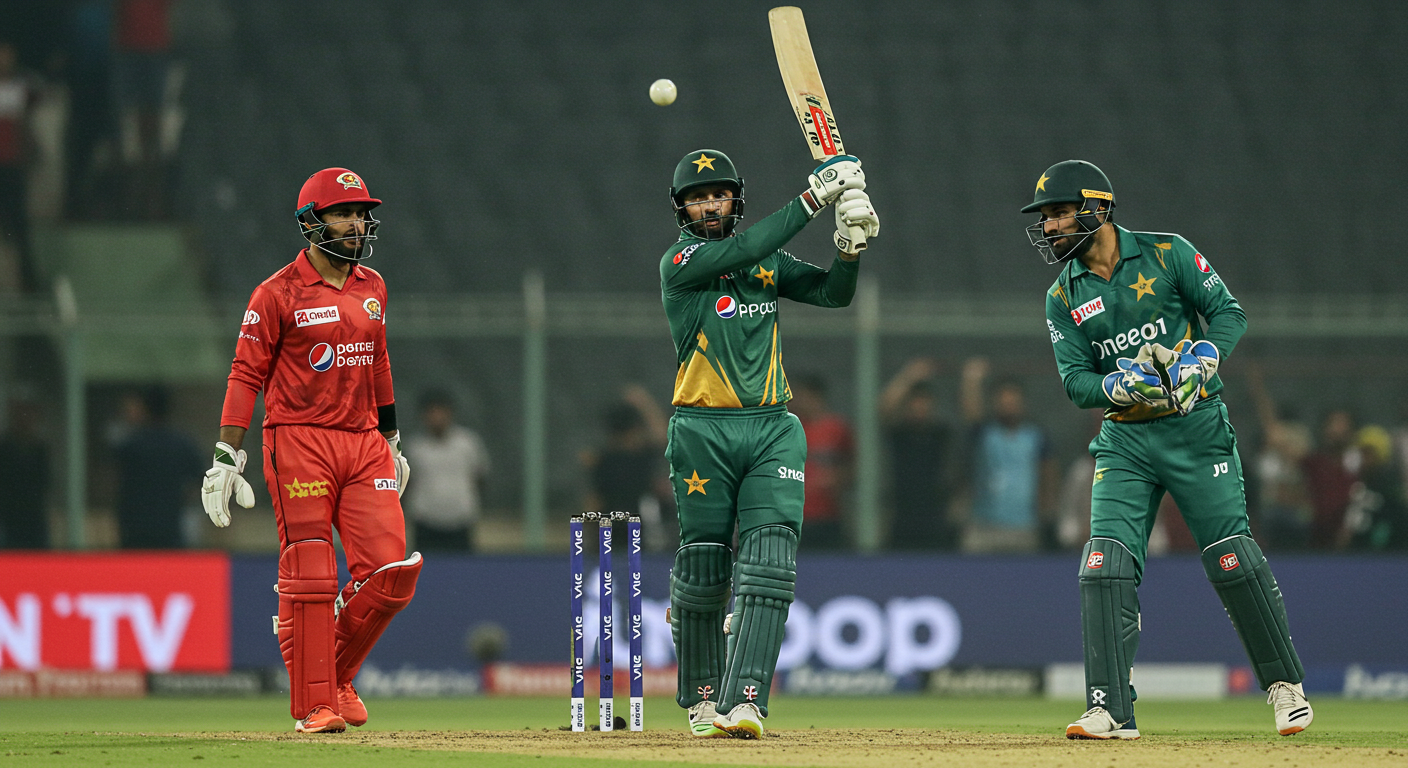Maulana Tariq Jameel and the Pakistan Cricket Team: A Deep Dive

Maulana Tariq Jameel and the Pakistan Cricket Team: A Deep Dive
Maulana Tariq Jameel, a renowned Islamic scholar and speaker, has garnered significant attention in recent years for his influence within Pakistani society. His teachings and activities extend far beyond religious circles, and this article aims to explore his relationship with the Pakistan cricket team, understanding the impact he may have had on the players and the sport itself.
Beyond the Pitch: A Spiritual Connection
In a nation deeply rooted in religious values and with cricket as a national passion, the relationship between religious figures and sporting icons is often complex and nuanced. Maulana Tariq Jameel’s involvement, if any, is often spoken about in hushed tones, veiled in the sensitivities surrounding faith and sport. This article will attempt to shed light on the possible interactions and influences, while maintaining a respectful and unbiased approach.
The Significance of Spiritual Guidance in Sport
Sport, especially at the highest level, often demands immense focus, discipline, and mental resilience. Players frequently seek guidance to navigate the pressure and the challenges faced in their careers. The role of spiritual advisors in supporting athletes’ well-being, not just from a faith perspective, but also in terms of mental fortitude, cannot be underestimated.
Maulana Tariq Jameel’s Public Image and Influence
Maulana Tariq Jameel is a prominent figure known for his motivational speeches and teachings, emphasizing personal growth, ethical values, and the importance of faith in daily life. His large following suggests a significant level of influence and trust within Pakistani society. It’s important to remember that this influence is not solely confined to the religious sphere. His messages resonate with a broad spectrum of people across socio-economic backgrounds and professions.
The Cricketers’ Perspective: Understanding the Influence
For this article, directly accessing the cricketers’ viewpoints to corroborate or dispel these rumors remains elusive. The nature of this relationship necessitates discretion and respect for their personal space and beliefs. Openly discussing such sensitive issues, especially in a country like Pakistan, can have profound personal and professional consequences for the individuals involved.
Analyzing the Potential Impact on Team Dynamics
The potential impact of Maulana Tariq Jameel’s influence on team dynamics is a multifaceted aspect. It is plausible to imagine that the shared values and guidance could create a stronger sense of unity and purpose among the players. Team cohesion is crucial in high-pressure environments, and if such interactions foster this, the impact could be significant. Conversely, potential internal disagreements or conflict in beliefs could negatively affect the team dynamic.
Exploring the Public Discourse and Perceptions
Public discourse surrounding the connection between Maulana Tariq Jameel and the Pakistan cricket team often appears in the Pakistani media. Whether these reports are based on direct statements, rumors, or inferred connections, it’s important to critically evaluate such information. This article aims to analyze existing information and explore the potential implications, without definitively confirming or denying specific claims.
Maulana Tariq Jameel’s Potential Influence on Team Performance
The possible influence on team performance is crucial. Does Maulana Tariq Jameel’s message impact the players’ mental approach to the game? Could it positively influence their focus, discipline, and determination during crucial moments? It’s highly speculative, but worthy of consideration. The extent of this influence, if any, would require extensive research and potentially access to the players’ internal thought processes. Such intimate knowledge is rarely, if ever, publicly available.
Looking at the Historical Context
Examining the historical context of religious influence in Pakistani society provides a broader perspective. Throughout history, there have been instances of religious leaders playing a role in various aspects of life, including sports. This tradition often intertwines deeply with the cultural values and beliefs of Pakistan. Understanding this backdrop helps to frame the discussion more comprehensively.
The Role of Media and Public Perception
The role of the media and public perception in shaping understanding of this issue is vital. Reports, interpretations, and public comments can often amplify or distort realities, making a balanced and neutral analysis more challenging. Understanding the ways in which public perceptions have developed over time is crucial in evaluating the complexity of this topic.
Beyond the Cricket Pitch: A Deeper Look at the Issue
This article should not be interpreted as endorsing or criticizing any individual or their beliefs. The aim is to facilitate a more comprehensive understanding of the multifaceted nature of this topic. Understanding this interaction provides insights into the interplay between religion, culture, and sports within the Pakistani context. This deeper analysis allows for a broader view, extending beyond the immediate discussion to appreciate the complexities of Pakistani society and the unique position of religious figures within it.
Conclusion
In conclusion, the relationship between Maulana Tariq Jameel and the Pakistan cricket team is a complex and nuanced topic. While direct evidence or claims are often elusive, there’s undeniable influence of religious figures within Pakistani society, potentially impacting a wide array of individuals, including athletes. This article highlights the potential impacts, emphasizing the need for a balanced approach and sensitivity when discussing such topics.
Further Research
Further research, ideally involving interviews with people directly connected to both the cricket team and Maulana Tariq Jameel, could potentially provide more concrete insights. This would be crucial in gaining a deeper understanding of the actual dynamics between these groups.